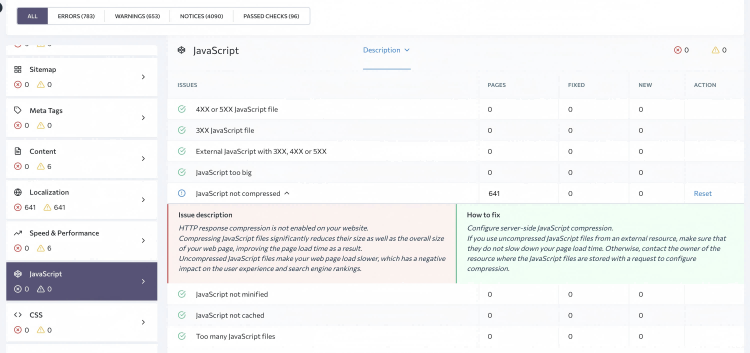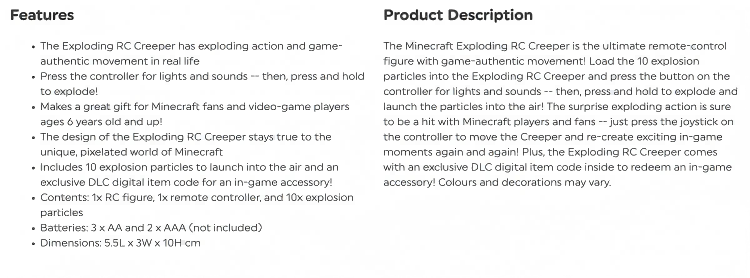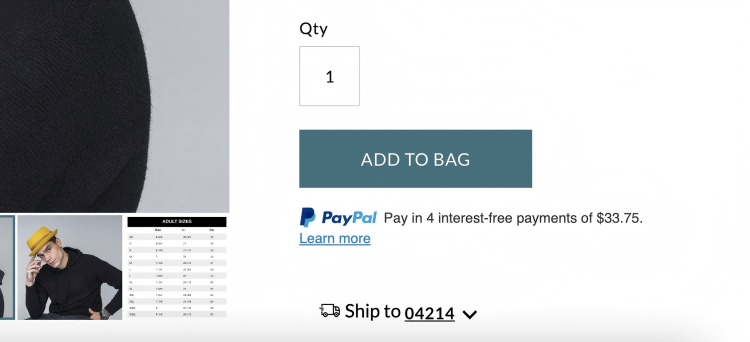Dropshipping is a great business model, especially for someone with a marketing and sales background. You don’t have to worry about logistics or production; you can just make a sale online and count the profits.
The major downside is that dropshipping is highly competitive. According to Oberlo’s research, the global dropshipping market is valued at over $300 billion. That’s an increase of 23% since 2023. This also means more competition for your business.
That’s why dropshippers must find ways to stand out in terms of both the amount of traffic they attract and the improvement of dropshipping conversion rates. In this article, you’ll learn about how to increase the conversion rate in your store with ten effective strategies, like offering streamlined checkout processes, optimizing your product pages, implementing dropshipping tracking for a better customer experience, and so on.
1. Improve Your Site’s Technical Performance
Technical performance is the foundation of B2C conversion rates—while often overlooked.
According to Portent’s 2022 study analyzing data from 20 e-commerce websites and over 27,000 landing pages, for every additional second of website load time, your e-commerce conversion rate drops by 0.3%, with the highest conversion rates occurring in the 1-2 second range before falling sharply below 2% after 4 seconds.
Also, the technical health of your website has a major influence on ranking. Google will prioritize websites that load fast on all devices and are visually stable in the search engine result page (SERP). Considering that many stores focus more on revenue growth rather than technical optimization, this gives you a competitive advantage in organic search.
So, how can you improve your website’s technical health?
Though you can find some technical errors on your site with free tools like Google Chrome’s Lighthouse, it’s best to use a specialized SEO tool.
Conduct comprehensive website SEO audit with SE Ranking, which provides in-depth analysis and actionable recommendations to address these common technical issues:
- Image size optimization: Image and video files are the longest-loading elements of a webpage. Optimize their size by compressing them and using different sizes for mobile and desktop.
- Lazy loading: Load some of the images after the page loads, improving overall site speed.
- Minimizing code: CSS and JS files can get lengthy and heavy. You can compress them without compromising the quality of the code and save loading time.
- Prioritizing code execution: Some scripts on your website aren’t essential to load fast. Postpone their loading, and you’ll shave off a second or two when loading the page.
- Caching: Caching is a standard web practice. Implement it, and user devices will store website data, improving loading speed.
- Choosing a quality hosting provider: Good speed and uptime depend on the servers on which your site is hosted. So, if you didn’t choose a good provider at the start, consider switching.

With your technical foundation in place, identify and fix other ranking issues. Tools like SE Ranking can help detect optimization opportunities, from technical SEO elements to content-related factors.
2. Simplify the Checkout Process
After establishing a solid technical foundation for your site, an unoptimized checkout process can become a critical conversion bottleneck where potential sales are lost.
According to Baymard Institute’s 2024 study, the average cart abandonment rate is 70.19%, and you can always try to reduce that figure. Some users abandon their carts because they get distracted or don’t want to make a purchase at the moment. While you can’t change that, you can change the abandonment that happens due to a poorly optimized checkout process.
To optimize it, remove all of the unnecessary elements.
- Don’t make the user create a profile or log into one to make a purchase. Even those who do have a profile on your site might forget their password. Forcing users to log in just to complete a purchase will only drive them away.
- Design the checkout pages with no distractions. If possible, introduce a one-click payment solution to make it even easier for the user.
- Some users may use the cart as a wishlist. Adding a dedicated wishlist feature can help you get more accurate cart abandonment data.
3. Optimize Product Descriptions
Your next step towards improving the conversion rate is optimizing product pages. Catchy content won’t be as good as selling the product itself. Give the user the information they’d be looking for about the product. The match between their expectations and the product information is what concludes the sale.
First, explore how successful stores create product pages. Look at the pages at the top ten of the Google search results and analyze the information they give to the user. You’ll have to include similar and even better information to improve the conversion rate. Also, consider creating descriptions with AI tools if you have too many pages to work with.
Write the text of the product description with the customer in mind. Choose the tone of voice and the information you provide based on what the customers like about these products and what they want to hear. Don’t forget to include keywords in the text.
Include all the important information in a bullet point list. Most customers won’t read the description but rather just look for important bits of information. Presenting them in a skimmable format can help you achieve a high conversion rate.

4. Use High-Quality Product Images and Videos
Text on the page is only half the success of eCommerce conversion rate optimization. The other are quality photos that showcase the product. If a user can’t see the benefits of the product visually, they’ll likely hesitate to make the purchase.
Feature multiple high-quality images of varying angles of the product in use. If there’s a video of the product, it’s even better, as some consumers will trust it more than staged photos.

Balance the high quality with technical optimization and make sure the image files won’t slow loading. It’s best to have multiple image files of different sizes and load smaller ones on mobile devices.
Taking pictures yourself requires an expensive setup, and if you have hundreds of products, that process can take a lot of time and spending. Consider recording unpacking videos of the products—these can help with building trust with your brand.
You can utilize other sources of images, such as the manufacturer’s website and UGC. Customers will trust user photos more than promotional materials, which can influence conversion rate.
5. Implement a Strong Call-to-Action (CTA)
The most important interactive element on the product page is the call-to-action button. The button itself and the space around it provide several opportunities for Shopify conversion rate optimization.
First, the CTA button should visually stand out from the page while staying in the general color scheme of the website. That’s the easy part—the background is typically white, and if you don’t visually overload your page and make the CTA button a solid color, it should work fine.
The text on the button should leave no doubt as to what the result of clicking on it is. Try texts like “Add to cart,” “Buy,” or “Buy now.” Avoid ambiguous wording like “I want it.” In this example, users might think it’s the wishlist button.
Information that is close to the CTA is also important. You can include a perk or a FOMO element next to it, like showing when the deal ends or how many items are left in stock. You can also add payment options as this site does.

The most important thing here is to experiment until you find what works for you. Run A/B tests on the website and see how colors, texts, and elements near the CTA perform.
6. Leverage Social Proof and Customer Reviews
You can’t underestimate the power of having authentic reviews on your page. In fact, 93% of shoppers say ratings and reviews influence their purchase decisions and 45% state they won’t buy products without reviews at all. This means that reviews significantly impact conversion rates.

If you’re running a store on Shopify, use review plugins like Judge.me or Loox to incorporate customer feedback into your site. It’s best to display a star rating and reviews for every product but place the reviews below the fold to give space for product information.
To incentivize customers to leave reviews, simply ask for reviews with every purchase. You can also configure the email automation tool to ask for reviews a couple of days after purchase.
7. Offer Exceptional Customer Support
Many dropshipping businesses don’t put in the work needed to make the customer happy. If you do, you immediately stand out.
Make sure you’re easy to reach through multiple options. Customers will have different preferences for contacting businesses, ranging from calls and live chat apps like Zendesk to social media messengers, and you have to be ready to help them anywhere.
Be polite and solve any problems they might encounter with the product, especially with returns management and refunds. If you see questions popping up frequently, add them to the self-service options like FAQ or a chatbot.
8. Provide Shipment Tracking Visibility
During the post-purchase journey, one of the biggest concerns for online shoppers is knowing where their package is and when it will arrive. Clear shipment tracking isn’t just a feature—it’s a must-have for building trust and reducing support tickets from customers.
Start by integrating order tracking directly into your store. Let customers easily access their tracking information without having to visit external carrier websites. Send automatic email updates at key stages: when the order is confirmed, when it ships, and when it’s out for delivery.
Take it to the next level by showing estimated delivery dates before customers even place their orders. This transparency helps set clear expectations and reduces the “where’s my order?” anxiety that often leads to cart abandonment.
Remember that most support tickets are about order status. By making tracking information readily available, you’re not just improving customer experience but also reducing your support workload.
Pro tip: If you’re dropshipping from multiple suppliers, use a unified shipment tracking system that can consolidate updates from different carriers into one clean interface for your customers. This makes their experience seamless, regardless of where their items are shipping from.

9. Offer Discounts or Free Shipping
As competition in B2C retail and dropshipping is quite high, merchants all have to compete by offering something extra with the purchase. Discounts and special deals are a great way to do that, but you have to be careful with them, as a generous discount policy can wreck your bottom line.
To make sure they benefit your business, offer them at the right time. In times of high demand or after a user action. For instance, if they haven’t made a purchase in three months. In Shopify, you can create automatic discounts. Plugins and third-party software do the same for other eCommerce platforms and custom-built stores.
Explore referral discounts if you have a large audience. Create a discount code for referrals and provide benefits to the person referring a friend and to that friend. Send out emails to your customers with the offer, and a decent percentage is likely to share the deal.
Free shipping remains a powerful strategy to boost conversion rates. As Baymard Institute’s study shows, 48% of shoppers abandon their carts due to high extra costs like shipping fees, and another 21% leave because they couldn’t calculate the total order cost upfront. While most consumers understand shipping isn’t actually ‘free’, they expect transparency – display shipping costs and stock status front and center to avoid unpleasant surprises at checkout!
10. Use Retargeting and Email Marketing
When users see your store as a nameless Shopify dropshipping store, they’ll be hesitant to convert. When they already know at least a bit about you, conversion is more likely. That’s why retargeting can drive converting traffic to your site.
This type of paid advertising serves ads only to people who have already interacted with your site. It reaches people who browsed your products or abandoned a cart on Google network and Meta.
Email marketing is a powerful tool for driving sales and building customer loyalty through enhanced post-purchase experiences.
Use the email list you’ve gathered to send deals and discount coupons to customers, promote referral campaigns, and introduce new arrivals. It works best when you send emails based on user preferences or actions. For instance, you can send emails after a user abandons their cart to try to get them back on the site.
Create an unsubscribe button in your emails, but add a poll to understand why the user is unsubscribing. If you have the option for the user to tune their email marketing settings, turn this poll into an unsubscription prevention tool.
Summary
Dropshipping is a competitive business with thin margins, so look for opportunities to optimize sales when you can. There are two major things to focus on—increasing the amount of traffic your store and optimizing it for conversions.
Use tips from this guide to optimize the aspects of your website that are important for conversions, like fast loading speed, smooth checkout process, clear product page content, full shipment visibility, and seamless customer experience.
Then, track how they perform and analyze the results to understand what improves conversion rates and experiment with your implementation until you’re happy with the results!
The TrackingMore team shares insights on logistics tracking technology, industry trends, and e-commerce logistics solutions to help businesses streamline shipment tracking and enhance customer post-purchase experience.